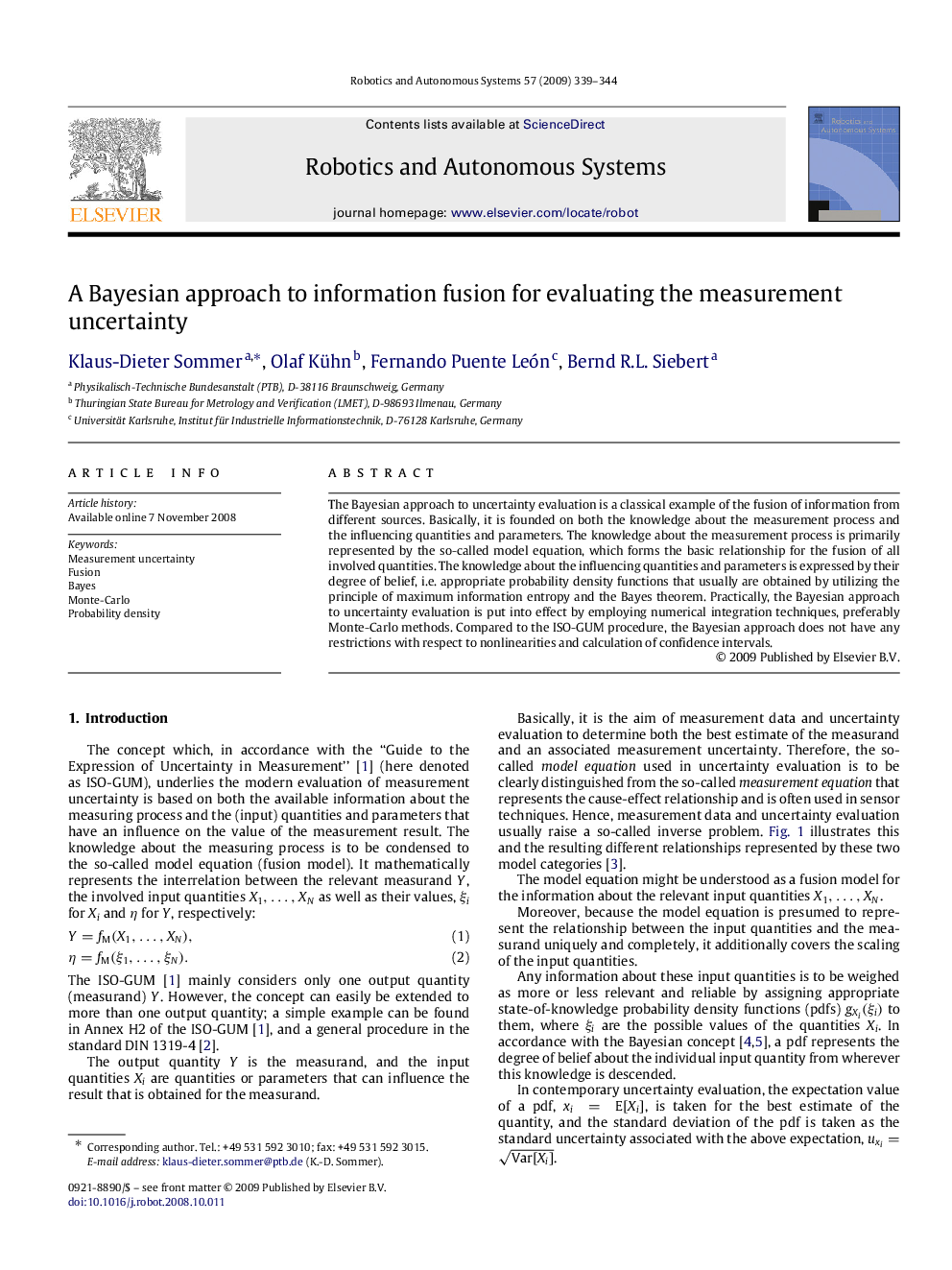| Article ID | Journal | Published Year | Pages | File Type |
|---|---|---|---|---|
| 411985 | Robotics and Autonomous Systems | 2009 | 6 Pages |
The Bayesian approach to uncertainty evaluation is a classical example of the fusion of information from different sources. Basically, it is founded on both the knowledge about the measurement process and the influencing quantities and parameters. The knowledge about the measurement process is primarily represented by the so-called model equation, which forms the basic relationship for the fusion of all involved quantities. The knowledge about the influencing quantities and parameters is expressed by their degree of belief, i.e. appropriate probability density functions that usually are obtained by utilizing the principle of maximum information entropy and the Bayes theorem. Practically, the Bayesian approach to uncertainty evaluation is put into effect by employing numerical integration techniques, preferably Monte-Carlo methods. Compared to the ISO-GUM procedure, the Bayesian approach does not have any restrictions with respect to nonlinearities and calculation of confidence intervals.
